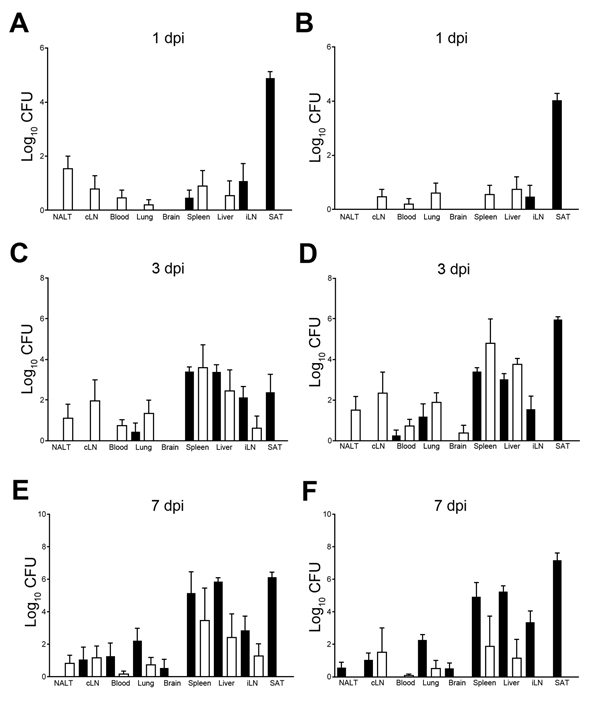Volume 21, Number 1—January 2015
Research
Neurotropic Threat Characterization of Burkholderia pseudomallei Strains
Figure 2

Figure 2. Comparison of Burkholderia pseudomallei loads in organs of BALB/c mice at days 1 (A, B), 3 (C, D) and 7 (E, F) after intranasal (white bars) and subcutaneous (black bars) infection with the neurologic isolates MSHR435 (5 × 102 CFU; panels A, C, E) and MSHR1153 (4.5 × 102 CFU; panels B, D, F) , Northern Territory, Australia, October 1989–October 2012. Bacterial loads were assessed in NALT, cLN, iLN, blood, lung, brain, spleen, liver, and SAT at the indicated dpi. Five mice were assessed at each time point. Data are expressed as mean l;og10 CFU per tissue ± SEM. cLN, cervical lymph nodes; dpi, days postinfection; iLN, inguinal lymph nodes; NALT, nasal-associated lymphoid tissue; SAT, subcutaneous adipose tissue. Error bars indicate standard error of the mean.